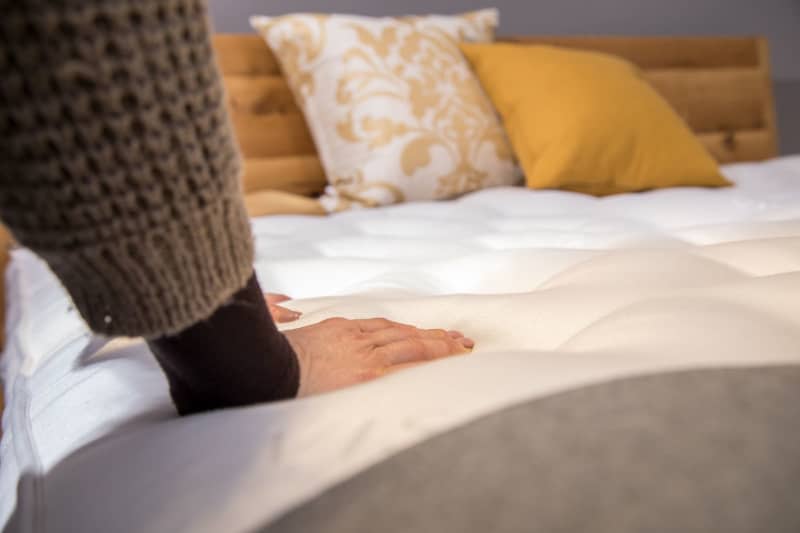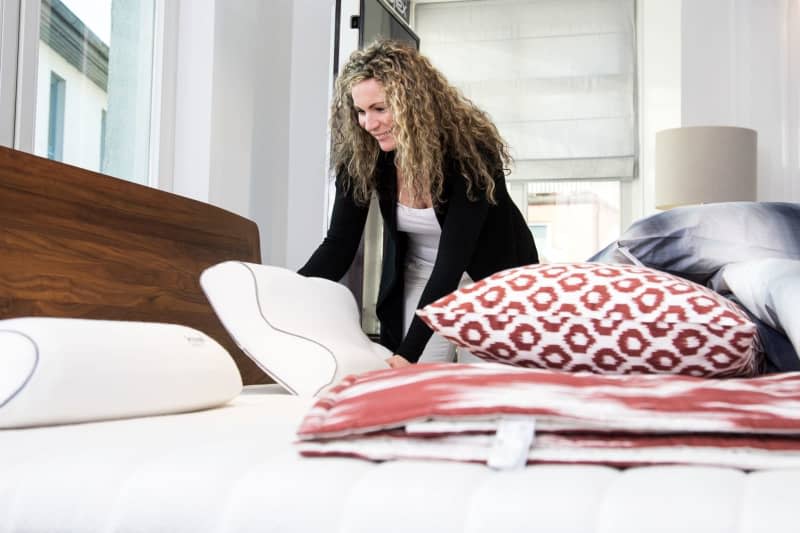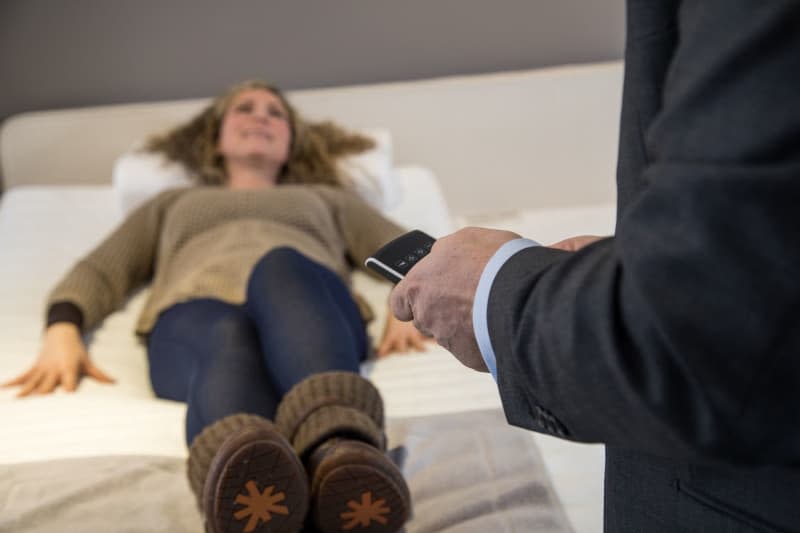Firm or soft? How to pick your dream bed

Most people will spend about one-third of their life in their bed, so for healthy sleep it's essential to choose the model well - and preferably one that will last for many years.
"You don't buy beds in passing or on the internet," says Marc Böhle from the Association of Specialist Bed Shops in Cologne, Germany. "This is one purchase that needs to be well prepared."
However, there's a dizzying selection to choose from: single and double beds, family beds, box spring beds, sofa beds, solid wood beds, upholstered beds, futons, pull-outs and much more.
"Which model fits the bill depends mainly on the user's size and stature," says Böhle. "But available space and personal preferences also play a role."
Know what matters to you!
Start by considering some key points before you even set foot in a specialist shop. How wide and high should the bed be? How tall and heavy are the people who will sleep in it? Should you get two single mattresses for a double? Does the underlay - an extra layer of support you can place on the mattress - need to be a different firmness? Consider too whether the sleepers tend to sweat a lot.
Once you're in the store, be sure to "test lie" the mattress - and don't be shy. Customers should try out the main sleeping positions at their leisure and pay close attention to how their shoulders, waist and lumbar spine are supported.
"Take your time and ask the salesperson to look at your sleeping positions. They know from experience what issues can occur later," says Böhle, warning that a thorough bed testing can take half an hour.
Another factor is the dimensions of the sleeping surface. "People often buy beds that are too narrow or too short," the expert says. As a rule of thumb, the bed should be at least 20 centimetres longer than the occupant's height. A single should be 1.40 to 1.60 metres wide, a double ideally 1.80 by 2 metres.
A pull-out is not for the long-term
If you need to save space there are solutions, but you are advised against indefinitely sleeping on a folding sofa or pull-out couch. "This is at best a temporary emergency solution," says Detlef Detjen, the publisher of Germany's AGR (Healthy Back Campaign) seal of approval for back-friendly products.
"Comfort on such sofas quickly diminishes due to their flat base," says Böhle. However, they are suitable for occasional overnight stays in guest rooms.
Only if a bed is large and wide enough does it allow the sleeper to move around at night, which is essential for healthy rest. "People turn 60 times at night if the mattress allows it," says Detjen. "This is important so that the body and mind can regenerate during sleep."
These movements are also restricted if the bed is too soft, as the body sinks so deeply into the mattress that it is hard to get out.
Adapted to the sleeper
"A good bed must be customised to the body and provide support in every position," says Detjen. Modern bed systems do this, offering a precisely coordinated flexible slat base and matching mattress.
"Comfortable slatted frames have one or more adjustment options," explains Böhle. In the most sophisticated models, the frame can be bent at head, hip, thigh and knee height. This can provide relief for the joints.
Frame and mattress in harmony
Bear in mind that not every slatted frame and slat base can be combined with every mattress. If the mattress and frame don't match, the fine-tuning of the support and protective effects is reduced. It therefore makes sense to buy both together.
"However, if you absolutely want to keep your old slatted frame, you should take a photo of it when buying a mattress. This will ensure that the right mattress is selected," advises Petra Kerner from the German Mattress Industry Association in Essen.
A mismatched mattress on a slatted frame is not only uncomfortable, but can also cause damage, especially on adjustable and motorised slat bases.
It's important for all sleepers that the mattress is firm enough to support their body. On the other hand, the mattress must not be too hard, as this is not only uncomfortable, but also impedes blood circulation.
People's individual mattress requirements are always different: Do you freeze or sweat quickly? Do you want to snuggle into it, or should the mattress be a tad firmer?
"The general rule is: not too hard, but not too soft. The mattress should support and hold, and you should neither sink in nor float," says Kerner. But above all, your sleep must be deep and comfy.



